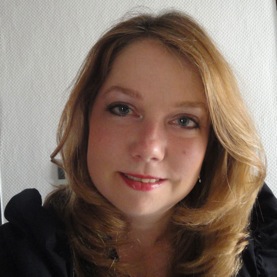Meet Simone Hamerla, 27, one of the up-and-coming physicists attending this year’s Lindau Nobel Laureate Meeting
Name: Simone Anke Hamerla
Age: 27
Born: Essen, Germany
Nationality: German
Age: 27
Born: Essen, Germany
Nationality: German
Current position: Ph.D. student, Technical University of Dortmund
Education: Prediploma, diploma from TU Dortmund
Education: Prediploma, diploma from TU Dortmund
What is your field of research?
I am working in condensed matter theory in the field of strongly correlated electron systems. At present my work focuses on fermionic systems driven out of equilibrium by a quench, i.e. a sudden change in the intrinsic system parameters. I study the dynamics of the system after an interaction quench, where the interaction between the particles is suddenly switched on, by the use of a semi-analytical method.
I am working in condensed matter theory in the field of strongly correlated electron systems. At present my work focuses on fermionic systems driven out of equilibrium by a quench, i.e. a sudden change in the intrinsic system parameters. I study the dynamics of the system after an interaction quench, where the interaction between the particles is suddenly switched on, by the use of a semi-analytical method.
What drew you to physics, and to that research area in particular?
I came to physics as I love solving puzzles and the idea that you can understand certain aspects of everyday life with your work. It is great that physics always provides puzzling observations that prove that you do not at all understand nature.
I came to physics as I love solving puzzles and the idea that you can understand certain aspects of everyday life with your work. It is great that physics always provides puzzling observations that prove that you do not at all understand nature.
As non-equilibrium systems are in highly excited states, a description of their dynamics imposes totally new requirements on the theory, which aroused my interest in these setups.
Where do you see yourself in 10 years?
Within the next 10 years I hope to gain an insight in the processes which are relevant for the relaxation of systems out of equilibrium. One of my goals is to understand by which means the thermalization is influenced and by which method these processes are described best.
Within the next 10 years I hope to gain an insight in the processes which are relevant for the relaxation of systems out of equilibrium. One of my goals is to understand by which means the thermalization is influenced and by which method these processes are described best.
Who are your scientific heroes?
I cannot state a single name here as my scientific heroes are spread over the whole area of physics.
I cannot state a single name here as my scientific heroes are spread over the whole area of physics.
What activities outside of physics do you most enjoy?
Dancing (Latin); languages: German, English, French, Latin, Chinese and Japanese.
Dancing (Latin); languages: German, English, French, Latin, Chinese and Japanese.
What do you hope to gain from this year’s Lindau meeting?
Due to its casual atmosphere the meeting represents a unique chance to get to know the personalities behind the greatest accomplishments in physics. In my opinion the meeting is the ideal platform to discuss their achievements, current problems and aspects which have to be considered when further pursuing our research.
Due to its casual atmosphere the meeting represents a unique chance to get to know the personalities behind the greatest accomplishments in physics. In my opinion the meeting is the ideal platform to discuss their achievements, current problems and aspects which have to be considered when further pursuing our research.
On the other hand one meets young scientists from all over the world and different disciplines. I think with our different backgrounds we can inspire each other and gain a new insight on physics. Thus the meeting provides an ideal breeding ground for new ideas.
Are there any Nobelists whom you are particularly excited to meet or learn from at Lindau?
I am of course especially interested in meeting the Nobelists working in my field. There are for example Prof. Dr. Theodor W. Hänsch and Prof. Dr. William D. Phillipswho laid the foundation of experiments with ultracold atoms. Ultracold atoms are the perfect testbed for the non-equilibrium systems that I study.
I am of course especially interested in meeting the Nobelists working in my field. There are for example Prof. Dr. Theodor W. Hänsch and Prof. Dr. William D. Phillipswho laid the foundation of experiments with ultracold atoms. Ultracold atoms are the perfect testbed for the non-equilibrium systems that I study.
